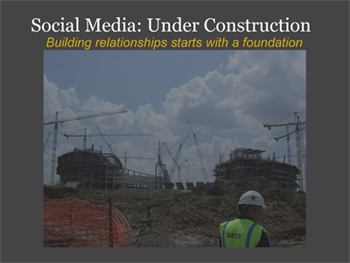I am reading Groundswell by Forrester Research’s Charlene Li and Josh Bernoff. This book is easily one of the most intriguing professional books I’ve read in a while. According to Li and Bernoff the groundswell is:
A social trend in which people use technologies to get the things they need from each other, rather than from traditional institutions like corporations.
While I don’t particularly care for the name they chose to describe the social media phenomenon, I do appreciate the terrific insight and research they’ve provided.
One graphical representation from the book helps explain the Social Technographics® Profile in the form of a Ladder to represent consumers’ social computing behavior categorized by participation.

The social participation rungs in the ladder are (from bottom to top): Inactives, Spectators, Joiners, Collectors, Critics, and Creators with explanations of each. The authors provide various samples of profiles to help drive home the point that different people come to you and your company or organization at very different levels of social media participation.
The POST Method
There are implications for business in assessing participation, especially when one applies the POST method for a social media strategy:
- Assess the social activities of your People;
- Decide what Objectives you want to accomplish;
- Plan your Strategy for changes in customer relations; then
- Decide on the suitable Technology or technologies to meet your goals.
I was struck by something so simple, but could have serious implications for those interested in social media if forgotten: The POST method starts with “P” for People.
People Matter
If you don’t have your people, (audience, stakeholders, customers, community, or any other term you use) your social media strategy will be much harder to effectively implement and accurately assess.
To often Communication/PR practitioners are presented with the challenge of adding a social media to their communication efforts and they jump straight to the latest and greatest social media technology with buzz.
I am all for jumping in and experimenting with social media mainly because you are more credible if you’ve experienced the various forms of social media. This holds true even if you outsource.
However, I caution (from experience) that your community participation assessment should come first.
If the biggest sin in social media is inaction, then I think the biggest mistake is not knowing your people.
Filed under: Books, Social Media | Tagged: Groundswell, Social Media | 1 Comment »
 Today marks a bitter-sweet day: It is the day I make the jump from WordPress.com over to Blogger.
Today marks a bitter-sweet day: It is the day I make the jump from WordPress.com over to Blogger.





 On Sunday, June 1, 2008 legal analyst
On Sunday, June 1, 2008 legal analyst 